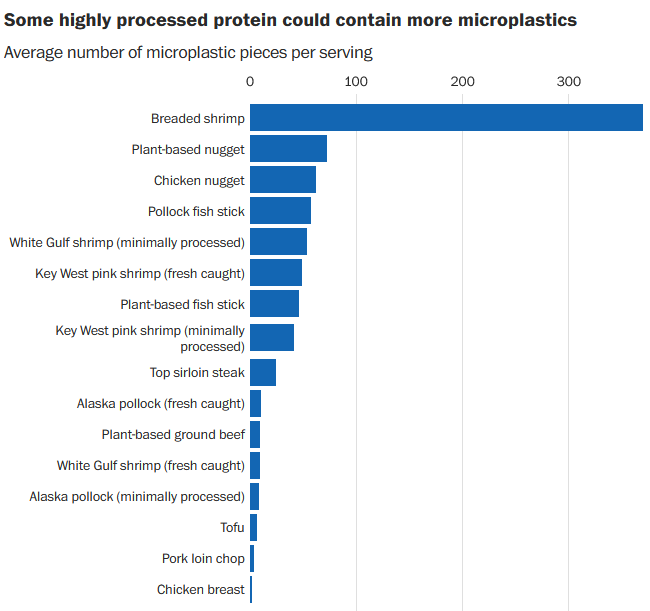Shocking “filth” legally allowed in your food —
Did you know there can be 450 insect parts and nine rodent hairs in every 16 oz. box of spaghetti?
Chocolate can contain insect fragments and rodent hairs (or worse). If you’re eating a regular-size chocolate bar (43 grams), it might legally contain 30 or more insect parts and some rodent hair.
Canned tomatoes, tomato paste and sauces such as pizza sauce are a bit less contaminated, with the FDA allowing nearly two maggots in a 16 oz. can.
Asparagus can contain 40 or more scary-looking but teensy thrips for every ¼ pound. If those aren’t around, FDA inspectors look for beetle eggs, entire insects or heads and body parts.
How about our old stand-by, peanut butter and jelly? Good news: Peanut butter is one of the most controlled foods in the FDA list; an average of one or more rodent hairs and 30 (or so) insect fragments are allowed for every 100 grams. The typical serving size for peanut butter is two tablespoons, which would allow for only eight insect fragments and a teensy tiny bit of rodent filth.
Apple butter can contain an average of four or more rodent hairs per 100 grams and about five whole insects – in addition to who knows how many teensy mites, aphids, and thrips. It can also have up to 12% mold.
As you sprinkle that pepper on your morning eggs, try not to think about the fact you may be eating more than 40 insect fragments with every teaspoon, along with a smidgen of rodent hair.
The coffee beans you grind for breakfast are allowed to have an average of 10 milligrams or more animal poop per pound. As much as 4% to 6% of beans are also allowed to be insect-infested or moldy.
Don’t tell the kids, but frozen or canned spinach is allowed to have an average of 50 aphids, thrips and mites. If those are missing, the FDA allows larvae of spinach worms or eight whole leaf miner bugs.
For every 4 oz. can of mushrooms there can be an average of 20 or more maggots of any size. At least they may be the same color, right?
Dismembered insects can be found in many of our favorite spices as well. Crushed oregano, for example, can contain 300 or more insect bits and about two rodent hairs for every 10 grams. To put that in context, a typical bottle of oregano is 3.12 oz. or 88 grams.
“Look, this is all a very, very, very low-risk situation,” Chapman said. “I look at it as a yuck factor versus a risk factor. Insect parts are gross, but they don’t lead to foodborne illnesses.”
Much more dangerous, Chapman points out, is the potential for stone, metal, plastic or glass parts to come along with harvested food as it enters the processing system. All foods are subjected to X-rays and metal detectors, Chapman said, because when those slip through, people can actually be hurt.
Also much more dangerous are foodborne illnesses such as salmonella, listeria and E. coli, which can severely sicken and even kill.
“Cross-contamination from raw food, undercooking food, hand-washing and spreading germs from raw food, those are the things that contribute to the more than 48 million cases of foodborne illness we have every year in the US,” Chapman said.
@AlexKChen I doubt the claim that vegan food has more ‘impurities’, except possibly microplastics but compared to what, how much does seafood have? Tofu seems low, as well as plant-based ground beef. If you buy from large reputable brands like Beyond Meat, how much do they have? That guy I don’t think used beyond meat, nor the cafeteria which might use some cheap substitute. Where is his control , why not buy a meat-based meal from the same cafeteria, etc?

https://www.washingtonpost.com/climate-solutions/2024/01/12/microplastics-fish-chicken-tofu-protein/